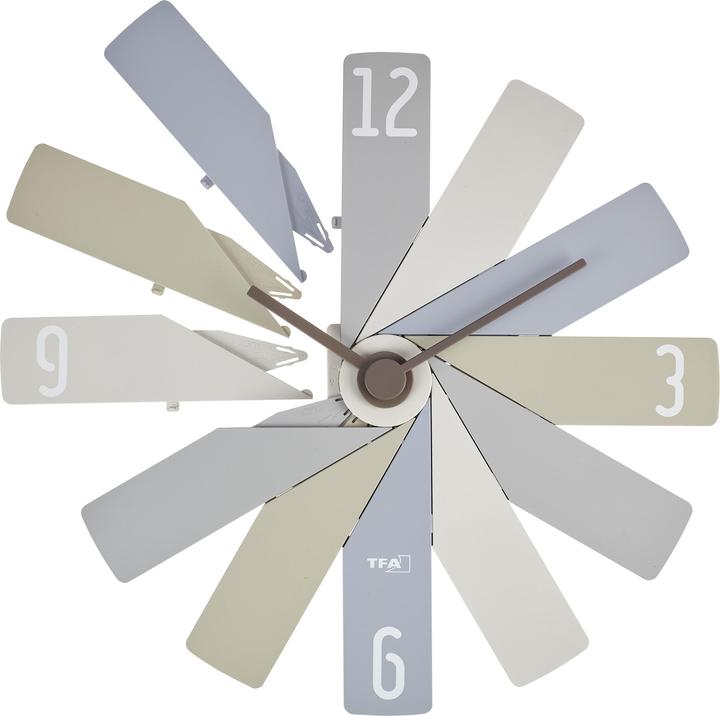

Clock in the Box – DIY design clock
This wall clock by TFA comes in a box that looks nothing like the packaging of a wall clock. Read on to find out what it’s all about.
The company TFA Dostmann is known for its weather stations and sensors. Their product range has always included a selection of wall clocks, but the Clock in the Box is new. It’s a DIY clock with
a creative and captivating twist. Although it has a diameter of 40 cm, it fits into a box of just 22 × 12 × 8 cm. Does this mean more clocks can be loaded into a container when they’re shipped from China, the country of production, to their destination market in Europe? Let me do the math:
The cardboard box has a volume of about 2,000 cubic centimetres. If the clock was packed when assembled, it would have dimensions of about 50 × 50 × 5 cm, which is 12,500 cubic centimetres. In other words, TFA saves over 80 per cent space during transportation, resulting in less CO₂. Although this is ultimately only a few grammes, it’s better than nothing.
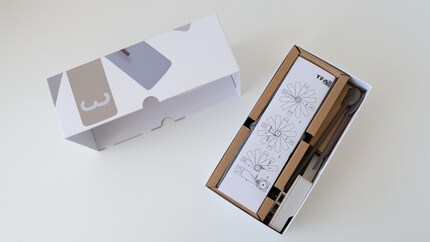
Source: Martin Jungfer
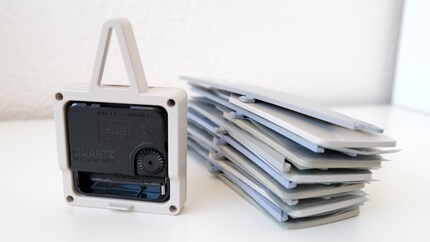
Source: Martin Jungfer
Assembly and finish
The box contains the movement and the twelve plastic pieces that form the clock face. A small folded manual helps me plug them into the right slot. There’s a QR code leading to a video tutorial, but I’m using the paper version.
I start with the piece with the number 12 printed on it and plug it into the movement. It says CLICK at the top of the plug-in pieces, but it doesn’t actually click. As a result, I press a little too hard on the first piece before I realise it’s plugged into place even without clicking.
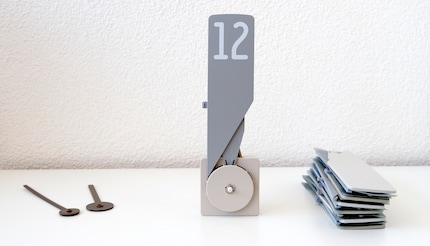
Source: Martin Jungfer
It takes me less than a minute to plug in pieces number two to nine – one after the other. At the back, the plug-in pieces have small hooks that hold onto the element next to them.
Then comes number ten. I need to consult the manual. It reads:
With the 10th and 11th plug-in parts, the slots are already «taken» by the double anchoring. Simply insert the tip in the direction of the arrow under the «12» in the slot provided.
This doesn’t help much, but gives me the crucial clue. I need to bend the 12th plug-in piece up slightly so that I can slide the 10th and 11th one underneath it. The plastic pieces are strong enough to withstand this.
Once all twelve pieces have been plugged in, I can move them to even out the gaps between them. I don’t get it perfectly right, but from a distance, it’s not noticeable.
Last but not least, I fit the hands. First the one for the hours, then the one for the minutes. There’s no seconds hand that might make an annoying ticking sound. The quartz movement is very quiet, almost silent. It’s powered by an AA battery, which isn’t included. I set the time using a wheel on the back of the movement.
The design of the clock isn’t flat. The circle of the plug-in pieces curves slightly backwards from the centre. On my test model, the minute hand, which is longer and thinner, is also slightly curved, while the hours hand is straight. This mean they touch slightly when passing. So far, however, this hasn’t had any negative effects on the functionality or accuracy of the clock. And after putting the minute hand under a pile of heavy books for a while, I managed to straighten it again.

Source: Martin Jungfer
Overall, the plastic pieces are rather solid and the clock face is stable. On closer inspection, however, I do notice small colour deviations and stains on the plastic surface. When plugging them in, avoid rubbing the pieces together, as they scratch easily.
Design
Famously, beauty lies in the eye of the beholder. In my opinion, the grey, blue and beige go together well and create a harmonious overall look. The clock is also available in just green or red. This could add an interesting splash of colour to many living rooms.
I’m not a fan of the TFA logo that’s printed on the 6 o’clock piece. TFA could have been more confident and relied on the clock standing for itself and not needing such a large logo. After all, if anyone commented on the clock, the owner would mention the manufacturer, resulting in free advertisement for TFA. The (too) large logo makes it look a bit like a promotional gift.
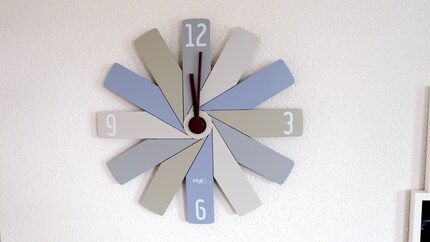
Source: Martin Jungfer
Speaking of design, TFA designer Andreas Brückner, who’s been with the Baden-Württemberg-based company for 25 years, designed this clock. He suffers from multiple sclerosis and controls graphics programs solely by moving his head. For every Clock in the Box TFA sells, they donate one euro to the German Multiple Sclerosis Society. That’s quite a lot considering the clock costs 25 francs or euros (as of March 2024).
In a nutshell
Wall clock with a twist
Pro
- compact packaging
- four colours / combinations available
- donation to charity
- low price but high quality
- DIY character
- minimalist design suits many interiors
Contra
- no radio-controlled clock, manual setting of summer and winter time
- (too) large logo on the clock
- scratch-sensitive plastic

Journalist since 1997. Stopovers in Franconia (or the Franken region), Lake Constance, Obwalden, Nidwalden and Zurich. Father since 2014. Expert in editorial organisation and motivation. Focus on sustainability, home office tools, beautiful things for the home, creative toys and sports equipment.


